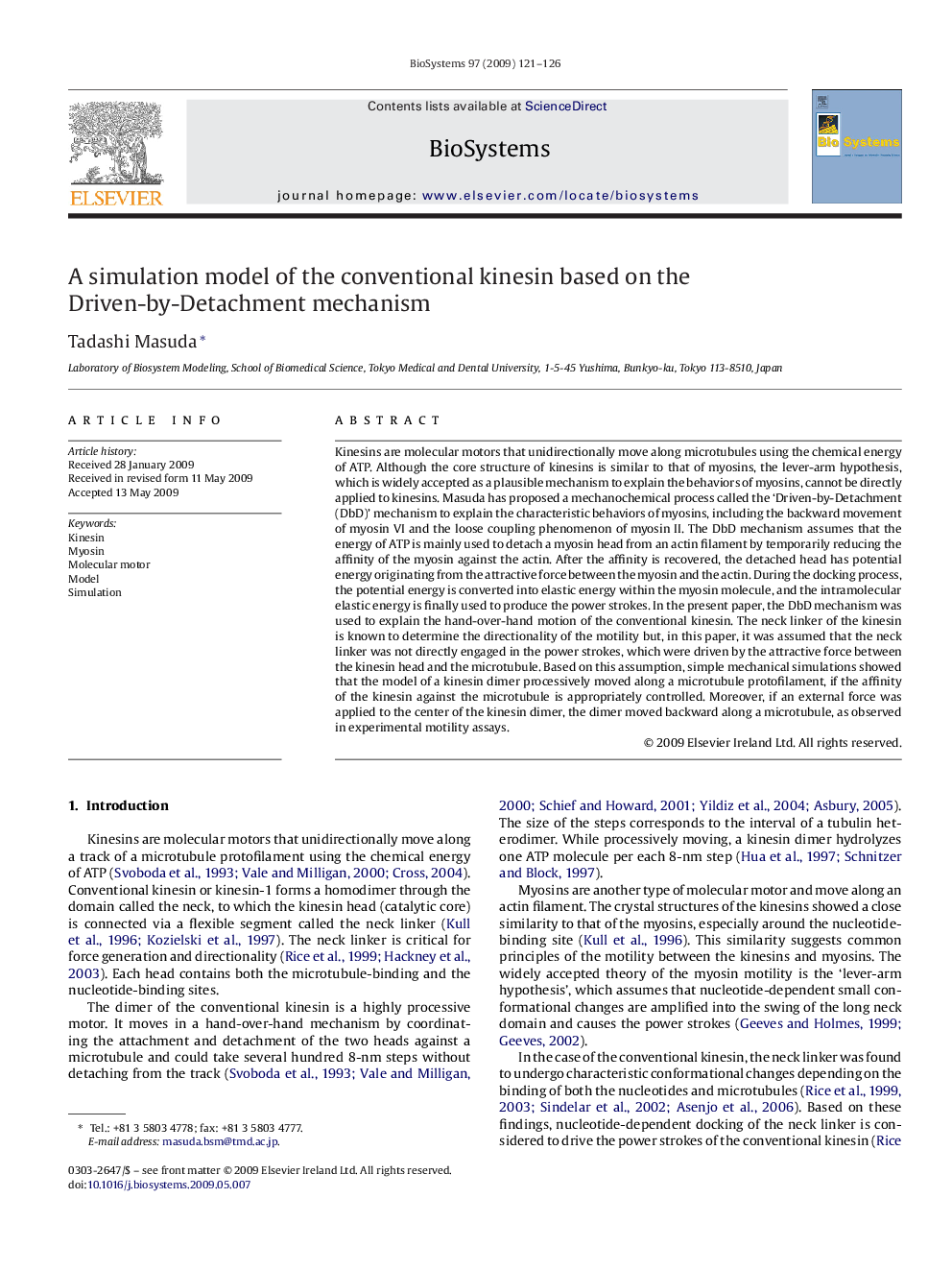| کد مقاله | کد نشریه | سال انتشار | مقاله انگلیسی | نسخه تمام متن |
|---|---|---|---|---|
| 2076460 | 1079446 | 2009 | 6 صفحه PDF | دانلود رایگان |
عنوان انگلیسی مقاله ISI
A simulation model of the conventional kinesin based on the Driven-by-Detachment mechanism
دانلود مقاله + سفارش ترجمه
دانلود مقاله ISI انگلیسی
رایگان برای ایرانیان
کلمات کلیدی
موضوعات مرتبط
مهندسی و علوم پایه
ریاضیات
مدلسازی و شبیه سازی
پیش نمایش صفحه اول مقاله

چکیده انگلیسی
Kinesins are molecular motors that unidirectionally move along microtubules using the chemical energy of ATP. Although the core structure of kinesins is similar to that of myosins, the lever-arm hypothesis, which is widely accepted as a plausible mechanism to explain the behaviors of myosins, cannot be directly applied to kinesins. Masuda has proposed a mechanochemical process called the 'Driven-by-Detachment (DbD)' mechanism to explain the characteristic behaviors of myosins, including the backward movement of myosin VI and the loose coupling phenomenon of myosin II. The DbD mechanism assumes that the energy of ATP is mainly used to detach a myosin head from an actin filament by temporarily reducing the affinity of the myosin against the actin. After the affinity is recovered, the detached head has potential energy originating from the attractive force between the myosin and the actin. During the docking process, the potential energy is converted into elastic energy within the myosin molecule, and the intramolecular elastic energy is finally used to produce the power strokes. In the present paper, the DbD mechanism was used to explain the hand-over-hand motion of the conventional kinesin. The neck linker of the kinesin is known to determine the directionality of the motility but, in this paper, it was assumed that the neck linker was not directly engaged in the power strokes, which were driven by the attractive force between the kinesin head and the microtubule. Based on this assumption, simple mechanical simulations showed that the model of a kinesin dimer processively moved along a microtubule protofilament, if the affinity of the kinesin against the microtubule is appropriately controlled. Moreover, if an external force was applied to the center of the kinesin dimer, the dimer moved backward along a microtubule, as observed in experimental motility assays.
ناشر
Database: Elsevier - ScienceDirect (ساینس دایرکت)
Journal: Biosystems - Volume 97, Issue 2, August 2009, Pages 121-126
Journal: Biosystems - Volume 97, Issue 2, August 2009, Pages 121-126
نویسندگان
Tadashi Masuda,